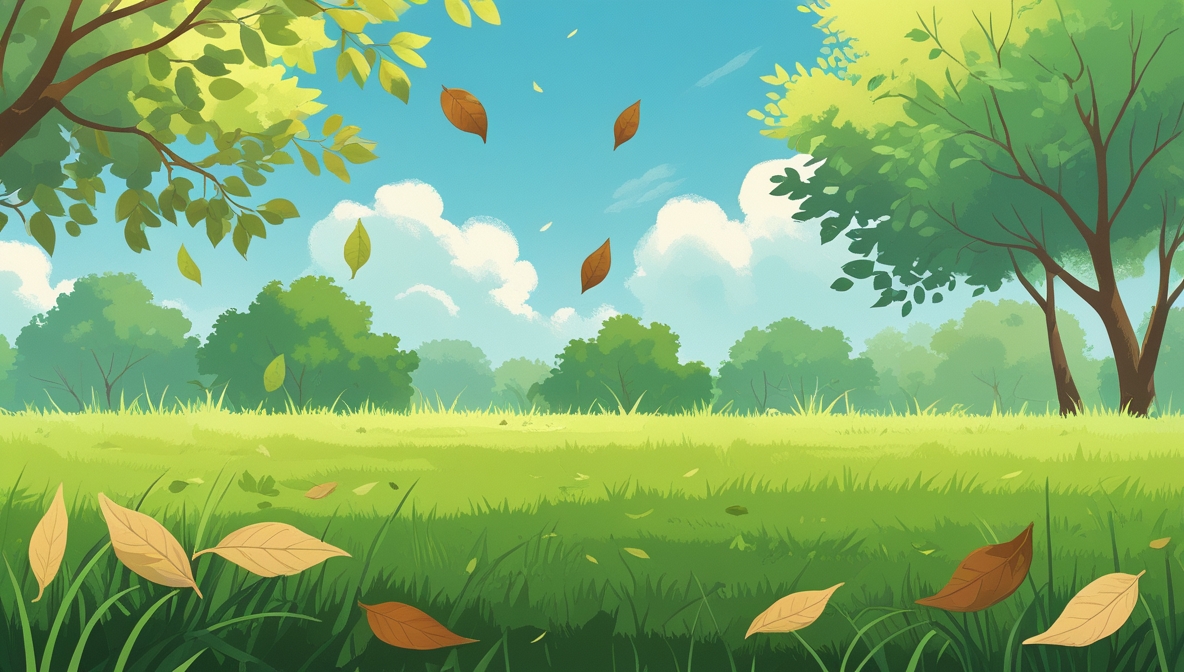Adding organic matter to lawns is a common practice aimed at improving soil health and promoting grass growth. Leaves, a readily available and often overlooked resource, present themselves as a potential fertilizer. However, their use isn’t a simple yes or no; understanding the benefits and drawbacks is crucial for maximizing their effectiveness. This article explores whether leaves are good for grass, examining the advantages and disadvantages of using leaf mulch and offering guidance on proper application.
Contents
Leaves as Grass Fertilizer?
Leaves, composed primarily of cellulose and other organic materials, can contribute significantly to soil health when properly incorporated. They decompose over time, releasing nutrients back into the soil, which can benefit grass growth. This natural process helps improve soil structure, increasing its water retention and aeration capacities. Furthermore, leaves can suppress weed growth, a common problem for lawns, by providing a layer of organic mulch.
However, not all leaves are created equal. Leaves from trees treated with pesticides or herbicides can carry harmful chemicals that could negatively impact grass health. Likewise, leaves from diseased trees might harbor pathogens that could spread to the lawn. Thorough composting is essential to mitigate these potential risks. Understanding the source of the leaves is a crucial preliminary step to their effective use.
While the decomposition process adds nutrients, the initial amount of nutrients in leaves themselves is relatively low. They are primarily a source of organic matter, which over time improves soil quality and enhances nutrient availability for grass. This slow-release nutrient delivery is generally considered beneficial for long-term grass health.
Leaves have a high carbon content, and the decomposition process requires nitrogen to complete. If too many leaves are added without sufficient nitrogen input, the soil can become imbalanced.
Benefits of Leaf Mulch
A layer of leaf mulch acts as a protective blanket for the soil, suppressing weeds and reducing water evaporation. This moisture retention is vital, especially during dry periods. The mulch layer also helps regulate soil temperature, keeping it cooler in the summer and warmer in the winter. This temperature control reduces stress on the grass, promoting healthier growth.
Leaf mulch enhances soil structure, making it more porous and allowing for better air circulation. This improved aeration is beneficial for root development, allowing grass roots to access essential nutrients more easily. Additionally, the organic matter in leaves helps improve soil drainage, preventing waterlogging which can damage grass roots.
The breakdown of leaf mulch releases essential nutrients, such as nitrogen, phosphorus, and potassium, gradually into the soil. These nutrients are vital for the health and growth of the grass. These nutrients are crucial for healthy leaf and stem development, supporting the overall vitality of the lawn.
Furthermore, leaf mulch can help to reduce the need for synthetic fertilizers, promoting a more environmentally friendly approach to lawn care. This reduction in synthetic inputs can also reduce the risk of water contamination from fertilizer runoff.
Potential Drawbacks of Leaf Mulch
Uncomposted leaves can harbor pests and diseases that could potentially harm the grass. Improper application can also lead to a dense layer that smothers the grass, preventing sunlight from reaching the lower leaves and potentially causing the grass to die.
Excessive leaf mulching can create a compacted layer on the soil surface. This compaction can inhibit the proper drainage and aeration of the soil, leading to poor root development and potentially increased waterlogging. In addition, if the leaf layer is not properly composted, it could lead to the growth of undesirable fungi or molds.
Leaf mulching can also attract pests and rodents if not managed properly. Uncomposted leaf piles can become a breeding ground for insects and rodents, potentially impacting the health of the lawn. Additionally, large quantities of leaves can lead to issues with decomposition, potentially creating unpleasant odors.
Leaving a thick layer of uncomposted leaves can prevent grass from receiving adequate sunlight, which is essential for photosynthesis. This lack of sunlight can lead to stunted growth, increased susceptibility to diseases, and a general decline in the overall health and vigor of the lawn.
How to Properly Use Leaf Compost
Before adding leaves to the lawn, ensure they are free from any signs of disease or pests. Gather leaves in a designated area and allow them to decompose in a compost bin or pile. Avoid using leaves that have been treated with chemicals, as these can negatively impact the soil.
After composting, spread the leaf compost evenly over the lawn. Avoid applying too much at once, as this can smother the grass. A thin layer of about 1-2 inches is generally sufficient. Mixing the compost into the top layer of soil is ideal.
Regular watering is essential to help the leaves break down and to ensure the compost is properly incorporated into the soil. Over time, the leaf compost will decompose, enriching the soil and providing nutrients for the grass. Test the soil to determine its pH level and adjust as needed.
Observe the lawn’s response to the leaf compost. If necessary, adjust the application rate or frequency. Regular monitoring and adjustments will help ensure the best possible outcome for your lawn’s health.
Ultimately, using leaves as a lawn fertilizer can be a valuable and environmentally friendly practice. However, proper composting and application techniques are essential to maximize the benefits and minimize potential drawbacks. By understanding the nuances of using leaves as mulch, homeowners can contribute to a healthier, more vibrant lawn while reducing their environmental impact.






